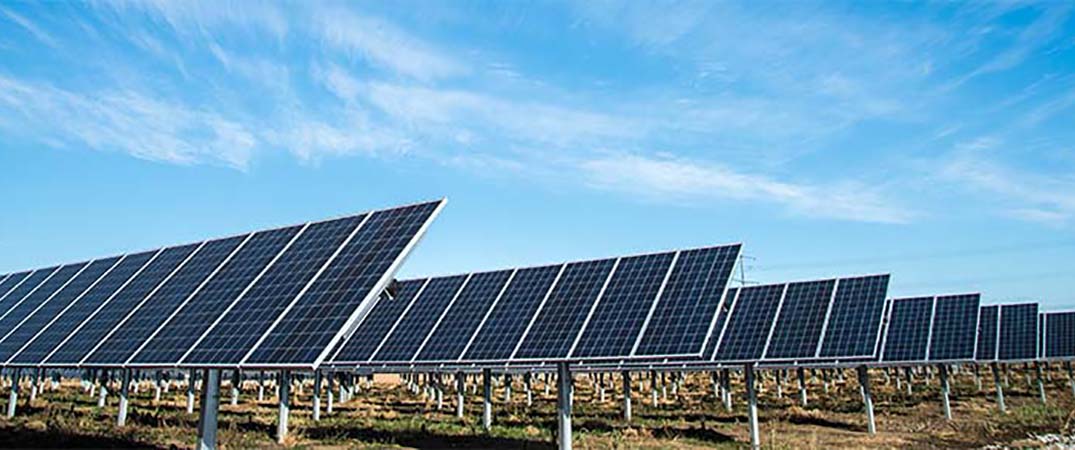A strong rebound of renewable installations, a continued surge in green hydrogen growth and a focus on recycling will be among the key themes in the Clean Technology space this year.
This is according to a new report on the Top Cleantech Trends to watch in 2021 by IHS Markit, which predicts that annual solar installations will grow by over 30% in 2021 after volatile demand in 2020, triggered by the covid-19 pandemic.
Although global installation numbers increasingly de-link from reliance on the Chinese market, China will still account for 35% of global annual installations in 2021. There are now 18 markets globally that have +1GW cumulative solar installations, compared to just six a decade earlier.
This strong market demand comes despite an increase in production costs (up 10–15%) driving a historic surge in module prices, especially in the first quarter. However, production costs are set to drop in the second half of the year, lowering module prices and laying the ground for record solar installations at the end of 2021.
“We will see for the first time a situation in which global demand grows over 30% despite high module prices in the first half of the year, which is unprecedented in the solar photovoltaic industry,” says Edurne Zoco, executive director: clean energy technology at IHS Markit.
2020 was a record year for wind with IHS Markit tracking activity of nearly 120 GW. Of this, nearly 60% was from mainland China including projects that have secured subsidy entitlement. Annual onshore wind installations in 2021 will continue to be derived from installation rushes in markets facing imminent subsidy cuts including the US and mainland China.
Non-mainstream renewables such as geothermal will continue generating increasing attention from conventional energy companies and investors – nearly 0.5GW of new capacity is expected to be commissioned throughout 2021, with Indonesia and Kenya leading the global market.
Spain, India and the Middle East region will continue to be the markets with the lowest solar levelized cost of electricity (LCOE). IHS Markit projectsphotovoltaic (PV) systems capex to continue declining in 2021 by 5% year on year, largely driven by decreasing component prices. Meanwhile, average module efficiency records continue to increase, surpassing 22,5% in PERC monocrystalline cell commercial production and are forecast to reach 24% by 2022.
Perovskites technologies, a promising solar cell technology development with significant potential to increase cell efficiencies and reduce costs, is set to continue breaking efficiency records, but the technology will only be mature for commercial production in the next five years.
In 2021 the offshore wind industry will deploy more than 10 GW of capacity, nearly twice as much as last year, driven by the boom in installations in mainland China. Capacity tenders will also burgeon this year with over 20GW worth of capacity to be auctioned in the UK, France, Denmark, Netherlands, Germany, the US, Japan and Taiwan.
Oil and gas majors will further accelerate growth in the offshore wind market as they aim to leverage technical and project management skills to increase their footprint in the renewables space.
“Floating foundations, the future of offshore wind in deep waters, are finally moving into the commercial phase. The industry has proven the reliability of technology in a dozen pilot projects, and in 2021 for the first time commercial floating capacity will be allocated through auctions in the UK and France,” says Andrei Utkin, senior associate: clean energy technology at IHS Markit.
The exponential growth in the electrolysis project pipeline in 2020 and the unprecedented interest around hydrogen as a decarbonization tool has been driven by a combination of falling costs and rising policy support. The declining cost of low-carbon hydrogen is anticipated to continue to fall by a further 40% through 2025 due to the falling cost of renewables electricity and the price decline expected in electrolysis technology as it is scaled-up.
“The record growth last year in green hydrogen installations – hydrogen produced via electrolysis of water using renewable power – will continue throughout 2021 as plans begin to increasingly translate into concrete action,” says Soufien Taamallah, director: clean energy technology at IHS Markit.
New policies for battery recycling will be led by the automotive industry, spurred on with a sense of urgency due to the shorter life cycle of batteries compared to solar panels and wind turbines and the scale of the EV sector.
Meanwhile, with over 20GW of the installed onshore wind fleet globally exceeding their 20-year design life in 2021, decisions about repowering, decommissioning, or extending life of existing capacity will play a growing role in mature markets. In the case of Germany, for example, over 6GW of capacity will end subsidies this year.
“Growing the share of recycling, especially for wind turbine blades, will be crucial towards meeting announced carbon neutrality goals and paving the way towards a circular economy,” says Indra Mukherjee, senior analyst: clean energy technology at IHS Markit.

